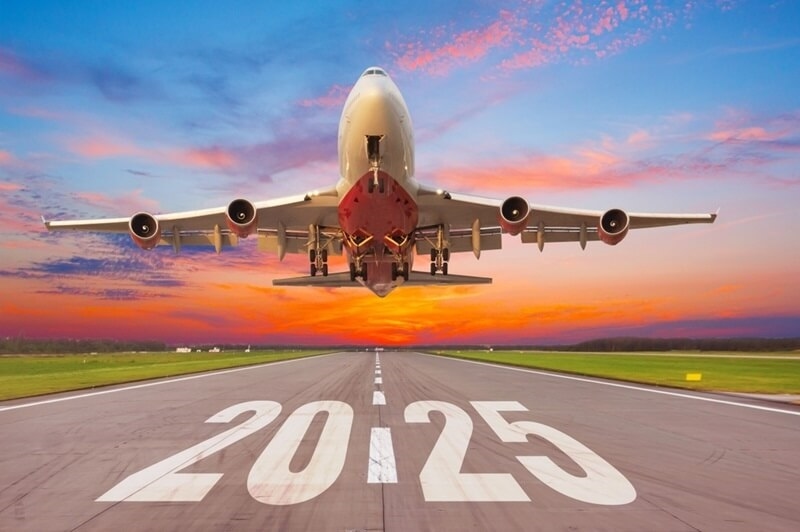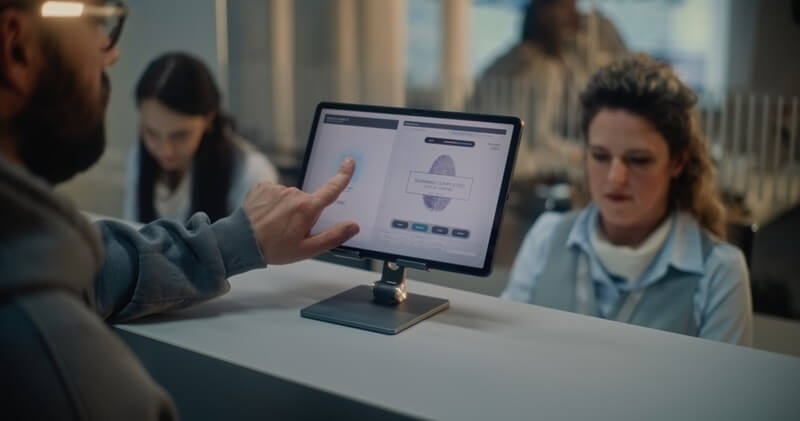
The travel experience is no more the way it used to be in 2025. The days of getting your tickets printed and waiting in a long queue are now gone. And this has happened because of the rise of the travel technology 2025. It has completely reshaped the experience of flying by making it faster and smarter than ever before. Every moment of your travel experience has changed with the smart travel technology upgrades at terminals and digital boarding passes in USA airports.
These changes sometimes go unnoticed, but if you take a moment and think about it, you will understand how this change has improved your overall experience while traveling.

When people talk about smart travel technology, it is not just an imaginary concept anymore. This innovation has almost changed everything to make your flying experience better. You can refer to the list below to understand its importance:
Facial recognition and fingerprint scans are replacing physical documents. It’s quicker and reduces the chance of errors.
Interactive airport maps help travelers to find the right terminals quickly with live updates. You can now even track delays, gate changes, and queues through these notifications.
With self-service bag drop kiosks, travelers check their luggage in seconds. No human contact, no long lines.
Algorithms predict crowd movement and direct passengers to the least busy checkpoints — saving time and reducing stress.
Smart travel technology works quietly and solves the problems before anyone notices they existed.
One of the most impactful innovations in travel technology 2025 is the complete shift toward contactless check-in. What once felt like a luxury now feels like the norm — and it’s hard to imagine air travel without it.
Instead of printing boarding passes or interacting with staff at counters, travelers can now:
It is not just about convenience. Contactless check-in supports a cleaner, safer airport environment. Especially in a world increasingly conscious of hygiene and personal space, this evolution is more than welcome.
This technology also supports travelers with disabilities or mobility issues, offering a smoother and more dignified airport experience which been something long overdue in global travel systems.
In the United States, the rise of digital boarding passes has completely redefined how domestic and international travel works. These passes are now accepted almost everywhere — from regional airports to the busiest terminals on the continent.
Here are the reasons behind digital boarding passes in USA airports becoming the gold standard:
Travelers can save boarding passes on their smartphones, smartwatches, or even within travel wallets in their apps.
Scanning a code is faster than fumbling through paperwork. Security staff move travelers through more efficiently.
If the gate changes, so does the boarding pass. The QR code updates in real time.
The shift is subtle but powerful. What once took minutes now takes seconds — and that time savings adds up quickly in an airport full of people trying to get somewhere fast.
This move toward digitization also helps reduce paper waste and printing costs, reinforcing the broader push for sustainability in travel technology 2025.
Must Read: Quick Travel Tips with Kids USA: Your Ultimate Guide
Airports are not the only places where the tech advancements are making massive transformations. The travel technology 2025 has contributed to huge changes in improving the flying experience.
Flight cabins today are equipped with smart upgrades that redefine passenger comfort:
Sensors adjust conditions based on passenger preferences and body temperatures.
Movies, games, and playlists adapt to traveler habits without even saving progress across connecting flights.
Smart headrests and built-in sound systems create pockets of silence even in full cabins.
Travelers can order food or drinks from their screens or devices removing the carts that used block the aisles.
These upgrades may not scream “innovation,” but they whisper it in every detail — and that whisper makes flying a lot more enjoyable.
Security used to be the most dreaded part of any journey. But now, it’s evolving — becoming faster, smarter, and more respectful of travelers’ time and privacy.
Passengers opting in can get cleared faster by sharing secure travel profiles ahead of time.
New scanners do not require passengers to remove shoes or laptops, all it needs is the small details. This is a huge benefit for frequent flyers as they can save a lot of time while check-in.
Some airports now offer digital kiosks with virtual customs interviews, making the process quicker without compromising security protocols.
Smart systems are being designed not to catch people off guard but to protect them more effectively. And in 2025, that balance between safety and simplicity is more crucial than ever.
Travel technology 2025 is not about flashy gadgets. It is about creating seamless journeys so that every moment, starting from the check-in to takeoff becomes faster and smoother.
With the tech evolving quietly but rapidly, it does not ask travelers to change much. Instead, it adapts around them, learning from their habits and simplifying what used to be frustrating.
So, whether someone is a frequent flyer or an occasional explorer, the experience in 2025 is noticeably better than it was a few years back. This is only because of the silent work that smart travel technology does.
Top Pick: Long Flight Travel Tips for Comfort and Entertainment
Flying in 2025 is not just about traveling from one place to another. It is about how it feels to move in the air, experiencing the flow and silence.
The rise of smart travel technology is slowly ending the era of the traditional travel planning. Contactless check-in and digital boarding passes in USA airports have now become a standard. This explains how travel technology 2025 is shaping every second of the journey. It offers efficiency, peace of mind to make your experience top-notch.
This content was created by AI